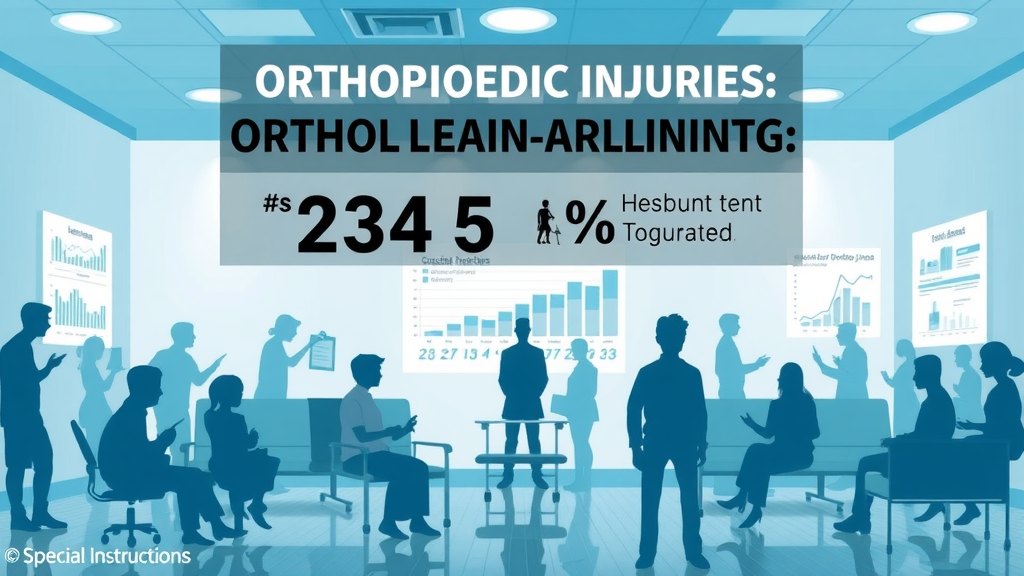Did you know that up to 40% faster recovery and significant cost savings are achievable through streamlined orthopedic care? This is largely possible thanks to orthopedic in-office services that bring advanced imaging, therapy, and minor procedures directly to patients without the delays and costs of hospital visits. In this article, we explore how integrating these services with insurance partnerships not only accelerates treatment but also enhances patient experience and outcomes.
Startling Facts About Orthopedic Care and the Rise of In-Office Services
Orthopedic conditions affect millions worldwide and prompt treatment is critical to successful recovery. Traditionally, patients faced long waits for imaging, specialist appointments, and sometimes complicated referrals for minor procedures. With the emergence of orthopedic in-office services , clinics like Denton Hand & Orthopedics have revolutionized care by providing immediate access to diagnostics and treatment under one roof.
This shift reduces unnecessary hospital visits and expedites recovery times, empowering patients with faster relief and less disruption. Experts have recognized that these in-office services are transforming orthopedic care delivery, with growing evidence highlighting improved patient satisfaction and significant reductions in recovery time.

What Are Orthopedic In-Office Services? An Overview
Orthopedic in-office services refer to a comprehensive set of diagnostic, therapeutic, and minor procedural care options available directly within the orthopedic clinic setting. This model enables immediate evaluation and treatment, often eliminating the need for external referrals or hospital visits. As Timothy Larson, of Denton Hand & Orthopedics, explains, “Providing compassionate and individualized care with in-office imaging and therapy allows us to address patient needs quickly and effectively.”
Key Components of Orthopedic In-Office Services
- In-office X-ray and ultrasound imaging for immediate evaluation — allowing prompt diagnosis without delay.
- Conservative treatment approaches such as physical therapy to minimize invasive procedures.
- In-office hand therapy to support patient recovery directly within the care setting.
- Application of casts, braces, and orthopedic devices by experts ensuring proper fit and function.
- Minor surgical procedures performed at nearby surgery centers, coordinated with in-office care.
The Role of Insurance Partnerships in Enhancing Orthopedic Care
Insurance partnerships play a pivotal role in making orthopedic in-office services both accessible and affordable. By contracting with multiple insurers, clinics reduce financial barriers and simplify the patient experience. Timothy Larson from Denton Hand & Orthopedics states, “Our insurance partnerships allow us to offer affordable, efficient care that reduces the need for costly hospital visits.”
Benefits of Insurance Partnerships for Patients
- Reduced out-of-pocket expenses , making care more affordable.
- Faster access to urgent care services without excessive administrative delays.
- Streamlined appointment scheduling through coordinated insurance processes.
- Coverage for a variety of minor procedures performed within or near the clinic.

Urgent Care and Quick Access: Orthopedic In-Office Services Advantage

How In-Office Services Improve Urgent Orthopedic Care
- Same-day or next-day appointments ensure urgent cases receive immediate attention.
- Immediate imaging and diagnosis shorten the time between symptom onset and treatment planning.
- On-site application of braces and casts provides timely stabilization of injuries.
- Minimally invasive procedures are performed promptly, reducing complications.
Comprehensive Orthopedic Care: Combining Sports Medicine and Orthopedic Expertise
“Our multidisciplinary approach ensures patients receive expert care tailored to their specific orthopedic and sports medicine needs,” says Timothy Larson. Integrating sports medicine specialists with orthopedic experts within one in-office service model guarantees holistic patient management from injury prevention to rehabilitation.
Treatment Options Offered Through In-Office Services
- Physical therapy and rehabilitation for restoring mobility and strength.
- Joint pain management using conservative and advanced modalities.
- Joint replacement consultations with expert guidance on surgical options.
- Minimally invasive surgical options coordinated through affiliated surgery centers.

Common Patient Questions About Orthopedic In-Office Services

What is an orthopedic office for?
An orthopedic office specializes in diagnosing, treating, and managing musculoskeletal issues including bones, joints, muscles, and tendons. The modern orthopedic office now commonly offers in-office services such as imaging, therapy, and minor procedures to enhance patient convenience and care efficiency.
What is the hardest orthopedic surgery to recover from?
Major joint replacements, especially complex hip or spine surgeries, are often considered the most challenging recoveries. However, with orthopedic in-office services providing pre- and post-operative therapy and minimally invasive options, recovery can be optimized and expedited.
What does an orthopedic appointment consist of?
Appointments typically include a thorough physical exam, medical history review, diagnostic imaging if necessary, and development of a treatment plan. The availability of in-office imaging allows many patients to receive diagnosis and initial treatment recommendations in a single visit.
Can I go straight to an orthopedic doctor?
Depending on your insurance and referral requirements, many patients can directly see an orthopedic specialist, especially in urgent cases. Orthopedic in-office services often facilitate rapid access without lengthy wait times to streamline your care.
What You'll Learn: Key Takeaways on Orthopedic In-Office Services
| Benefit | Description |
|---|---|
| Faster Diagnosis | In-office imaging enables immediate evaluation, reducing wait times and accelerating treatment. |
| Cost Savings | Insurance partnerships reduce out-of-pocket expenses, making care more affordable. |
| Convenience | Multiple services available under one roof streamline the patient experience. |
| Expert Care | Access to orthopedic experts and sports medicine specialists ensures tailored treatment. |

Conclusion: The Future of Orthopedic Care is In-Office
The integration of orthopedic in-office services combined with strong insurance partnerships is rapidly transforming patient care. By offering immediate diagnostics, faster treatment, and expert multidisciplinary support all within a single, convenient setting, clinics like Denton Hand & Orthopedics are setting new standards in orthopedic care excellence. As Timothy Larson affirms, these advancements mean patients no longer have to endure delays or excessive costs to receive high-quality care, truly streamlining their healing journey.
Ready to Feel Better? Schedule Your Consultation Today.
Don’t wait for your orthopedic issues to worsen. Take advantage of the advanced, patient-centered services available right now and experience the benefits of streamlined, expert orthopedic in-office care. Contact us today to schedule your consultation and take the first step towards a pain-free, active life.
 Add Row
Add Row  Add
Add 




Write A Comment